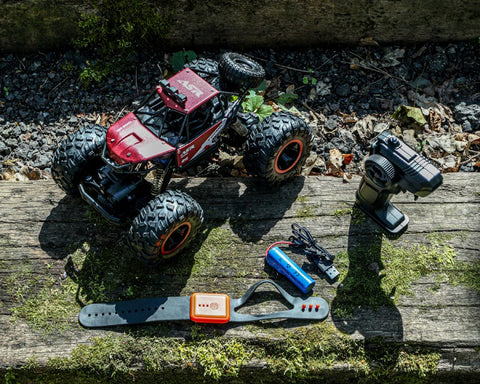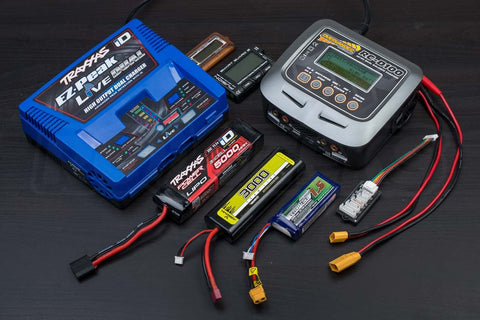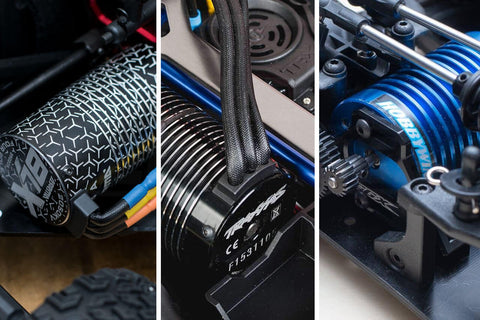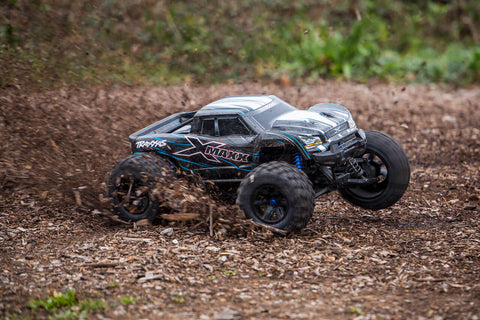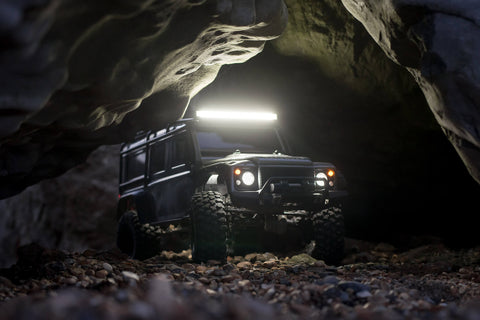The internet is currently awash with rumour regarding a new DJI product, potentially a Mavic 2 Pro drone. DJI's 'See the big picture' event will reveal all at 10am ET in New York/3pm UK time on the 18th July 2018 but until then we can only speculate about the content of the release. The following article leverages our knowledge and extensive experience with DJI releases, alongside rumours from credible sources within the drone industry, but by our own admission is not 100% factual.
 Much like some smartphone releases, It's easy to forget that there is more to it all than the camera. Let's take a look at some of our other expectations of the potential Mavic Pro 2
Much like some smartphone releases, It's easy to forget that there is more to it all than the camera. Let's take a look at some of our other expectations of the potential Mavic Pro 2
 The Mavic 2 could potentially 'tear the rule book up' and provide not only 360° surround protection coupled with downward facing sensors, but add an upward facing array for highly accurate flight under low ceilings. This updated vision positioning hardware will be paired with dual IMU's and an array of satellite positioning antennas for GPS, GLONASS, BeiDou and even Galileo to ensure a new level of position accuracy.
The Mavic 2 could potentially 'tear the rule book up' and provide not only 360° surround protection coupled with downward facing sensors, but add an upward facing array for highly accurate flight under low ceilings. This updated vision positioning hardware will be paired with dual IMU's and an array of satellite positioning antennas for GPS, GLONASS, BeiDou and even Galileo to ensure a new level of position accuracy.
 Whilst it would encroach into the realms of the Inspire X5S system, we wouldn't be surprised if DJI also make it compatible their remote Focus pulling system.
Whilst it would encroach into the realms of the Inspire X5S system, we wouldn't be surprised if DJI also make it compatible their remote Focus pulling system.
Mavic 2 Pro or Phantom 5?
The emphasis here is on pro, for professional. With the Mavic Air still recent and selling well, we feel that DJI will emphasise the Pro in the name, targeting professionals (and perhaps some prosumer's) with this new craft. It will fill the current product gap below the Phantom 4 Pro with a compact folding craft that can produce photos and videos at a truly professional level. Typically DJI will trickle down technology from previous years enterprise/professional products. As they continue to fit ever more powerful processors in tiny drones, we'd like to see a 'Cinecore light' setup in a Mavic 2 Pro edition. The original Mavic Pro had its 60Mbit video bit rate, now surpassed by the Mavic Air's 100, expect to see this jump again. Full support of D log (not just Cine D) alongside support of H.265 would really help here. 5.2K video is unlikely but 10-bit colour is quite possible with new advances in image processing and data-rate management. With 4k footage at 60fps and high-burst photography, expect to be using the fastest UHS-3 cards in this drone regardless!Heavily revised camera?
Professional drone operators are looking for performance across the board, but we find that image quality is often the most important. The original Mavic Pro was criticised for it's camera performance, even at launch and this will need to be addressed to encourage professional customers. A large one inch+ sensor, most likely an evolution of the one found in the Phantom 4 Pro V2.0) features in nearly every other rumour specification article around and we would agree. This lower density sensor would sport improved signal to noise ratios and perform in low light better than any DJI integrated camera system to date. DJI have been a majority shareholder in Hasselblad since early 2017, yet little has come forward from this relationship with the Swedish camera maker bar the H6D-100c/M600 combo last year. With other manufacturers linking up with Leica on mobile phones, we wouldn't be surprised to see the Hasselblad moniker on the side of a pro-series drone. A revised larger lens with high-end glass (that supports more standardised filter ring sizes) would also be welcome. A soft/global shutter is a possibility, the mechanical shutter adding complexity to what will have to be a very small camera. This will of course be hung from a class-leading 3-axis active brushless gimbal, a technology that DJI have long mastered.Mavic 2 - close up feature
DJI have limited experience with zoom cameras on the X3 sensor. With the Osmo+ a 3.5x optical zoom was built into an evolution of the X3 camera system and it enjoyed some success on the ground. A miniaturised version of this would be a big departure from the fixed focus lengths of their current range. Such a system would offer pilots the 'camera flexibility', allowing them to use longer focal lengths to move the drone away from the subject, working around UK flight restrictions. We would expect either a larger image sensor upgrade OR a zoom lens as the two would be difficult to build into the smaller form factor of a Mavic drone.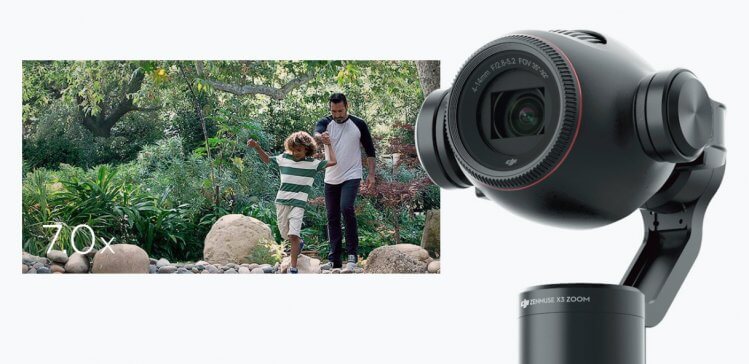 Much like some smartphone releases, It's easy to forget that there is more to it all than the camera. Let's take a look at some of our other expectations of the potential Mavic Pro 2
Much like some smartphone releases, It's easy to forget that there is more to it all than the camera. Let's take a look at some of our other expectations of the potential Mavic Pro 2
Brand new folding chassis
Portability has been core with every Mavic release from the Pro to the more recent air and we are certain that the Mavic 2 Pro will be no different. We expect to see a similar folding design as to that of the recent Mavic Air but with extensive use of flexible composite materials to improve crash-worthiness and reduce flex during high-performance flight. Claiming a specific IP rating is difficult on devices where cooling high-output electronics is so important, but an ingress protection level of say 65 would take advantage this latest 'must have' feature wave in the world of portable electronics.All-new Mavic 2 powertrain
It is difficult for a drone to superceed its predecessors without extending its flight time. Thankfully revised ECU components and a brand new brushless motor designs make beating the current 27 minutes of the original Mavic Pro straightforward for a manufacturer like DJI. As per previous releases, a new bespoke slimline 3-cell intelligent battery with visual charge indicator will doubtless debut but there are rumours that a 'fast charge' option with a high output transformer would be available to minimise drone downtime in. At 40 mph the current Mavic Pro is no slouch but well behind the 58mph of its big brother the Inspire 2. We'd like to see DJI split the difference and improve on the sport mode max velocity of 42mph from the Mavic Air, allowing for some epic one-man-operator tracking shots! Alongside these power improvements, moves to increase efficiency will doubtless mean an evolution of the quieter propellers found on the current model Mavic Pro Platinum.Intelligent Flight - Obstacle avoidance
Every new DJI drone release seems to take a progressive step closer to protected, fully-autonomous flight. The most recent object avoidance system on the Mavic Air is capable of 20m plus detection front and rear with 30m of downward range. The Mavic 2 could potentially 'tear the rule book up' and provide not only 360° surround protection coupled with downward facing sensors, but add an upward facing array for highly accurate flight under low ceilings. This updated vision positioning hardware will be paired with dual IMU's and an array of satellite positioning antennas for GPS, GLONASS, BeiDou and even Galileo to ensure a new level of position accuracy.
The Mavic 2 could potentially 'tear the rule book up' and provide not only 360° surround protection coupled with downward facing sensors, but add an upward facing array for highly accurate flight under low ceilings. This updated vision positioning hardware will be paired with dual IMU's and an array of satellite positioning antennas for GPS, GLONASS, BeiDou and even Galileo to ensure a new level of position accuracy.
Cross Compatibility
DJI have developed a host of products that join together to create an ecosystem of advanced filming technology. At a bare minimum the Mavic 2 will include Occusync to ensure continued compatibility with the DJI Goggles and DJI Goggles Racing Edition. Whilst it would encroach into the realms of the Inspire X5S system, we wouldn't be surprised if DJI also make it compatible their remote Focus pulling system.
Whilst it would encroach into the realms of the Inspire X5S system, we wouldn't be surprised if DJI also make it compatible their remote Focus pulling system.






